Question 1 1 point The conflict perspective portrays crimina
Question 1 (1 point)
The conflict perspective portrays criminal law as a product of:
Question 1 options:
social needs and values
the interest of powerful groups
the interest of society at large
none of the above
Save
Question 2 (1 point)
Emile Durkheim conceived of crime as:
Question 2 options:
created by the wealthiest class.
destroying societal functioning.
healthy and functional to society.
oppressing business trade.
Save
Question 3 (1 point)
Campaigning for laws rooted in moral conceptions is known as:
Question 3 options:
artificial criminalization
moral entrepreneurship
norm legislating
victim lobbying
Save
Question 4 (1 point)
________ is the term that refers to believing that the customs and values of one\'s own culture are superior to those of other cultures:
Question 4 options:
cultural centrism
ethnic prejudice
ethnocentrism
cultural bias
Save
Question 5 (1 point)
Which of the following applies to civil law:
Question 5 options:
It addresses wrongs that injure society at large.
It can be retroactive.
It provides for penal sanctions.
All of the above.
Save
Question 6 (1 point)
Sanctions that maybe imposed under civil law include:
Question 6 options:
compensating the plaintiff
incarceration
probation
all of the above
Save
Question 7 (1 point)
_______ involves the punishment of past wrongdoing in order to achieve a moral balance.
Question 7 options:
Deterrence
Incapacitation
Rehabilitation
Retribution
Save
Question 8 (1 point)
Which of the following typically exercises the most discretion?
Question 8 options:
Police Chief
Police patrol officer
Police precinct commander
All are the same
Save
Question 9 (1 point)
Which of the following extra legal factors appear to influence discretion by criminal justice officials?
Question 9 options:
gender
race and ethnicity
social class
all of the above
Save
Question 10 (1 point)
Which of the following applies to civil (tort) law?
Question 10 options:
If addresses wrongs that ignore society at large.
It can be retroactive
It provides penal sanctions
all of the above
Save
Question 11 (1 point)
Which of the following provides complete incapacitation?
Question 11 options:
capital punishment
exile
imprisonment
whipping
Save
Question 12 (1 point)
______ is designed to change offenders by removing the motivation to engage in criminal behavior:
Question 12 options:
general deterrence
incapacitation
rehabilitation
reprogramming
Save
Question 13 (1 point)
Which of the following is not based on utilitarianism?
Question 13 options:
deterrence
incapacitation
rehabilitation
retribution
Save
Question 14 (1 point)
Community-based corrections seek which of the following goals of criminal justice?
Question 14 options:
deterrence
rehabilitation
retribution
community outreach
Save
Question 15 (1 point)
The ________ model of criminal justice sanctions maintains that legal factors account for criminal justice decisions rather than extra legal factors, such as sex.
Question 15 options:
performance
legal
Formal
Bush-Cheney
Save
Question 16 (1 point)
In viewing crime as normal, Durkheim states that sometimes crime may be viewed as:
Question 16 options:
an anathema to those in power.
abnormal when rates are very high.
desirable, from a behavioral science point of view.
a social form of mental illness.
Save
Question 17 (1 point)
According to Durkheim, one reason why crime is normal is that
Question 17 options:
genetics will always lay the foundation for illegal acts.
the pursuit of wealth inevitably causes greed.
the middle class actively and consciously supports it.
it is impossible for a society to be exempt from it.
Save
Question 18 (1 point)
As part of his view of crime, Durkheim discusses:
Question 18 options:
the individual\'s consciousness and sense of dignity, which are factors in whether or not a particular act is labeled a crime or is viewed as a simple moral fault.
broad sociological trends that include biological factors as well.
the increasing role of white-collar criminals.
the power of police in improving their clearance rates.
Save
Question 19 (1 point)
Moynihan suggests that the latest efforts to explain and respond to crime involve
Question 19 options:
declaring violent crime a public health emergency.
legislators\' doubling states\' educational budgets.
increasing the number of recipients of food stamps.
reducing the number of liberal arts courses in small colleges.
Save
Question 20 (1 point)
In 1990 the Department of Justice found that Americans reported only 38 percent of all crimes and 48 percent of all violent crimes. This, argues Moynihan, is a means of
Question 20 options:
publicizing crime.
justifying crime.
showing serious problems with official statistics.
normalizing crime.
Save
Question 21 (1 point)
Moynihan faults Durkheim\'s theory because Durkheim:
Question 21 options:
romanticizes ambiguous forms of deviance.
uses Europe for his data base and ignores the United States.
ignores historical economic trends that stretch over centuries.
does not address the possibility of there being too much crime.
| social needs and values | |
| the interest of powerful groups | |
| the interest of society at large | |
| none of the above |
Solution
1) A
2) C
3) B
4) C
5)D
6)B
7)D
8)D
9) A
10) C
11) C
13) C
13) A
14) B
15) B
16) B
17) C
18) A
19) B
20) C
21) A
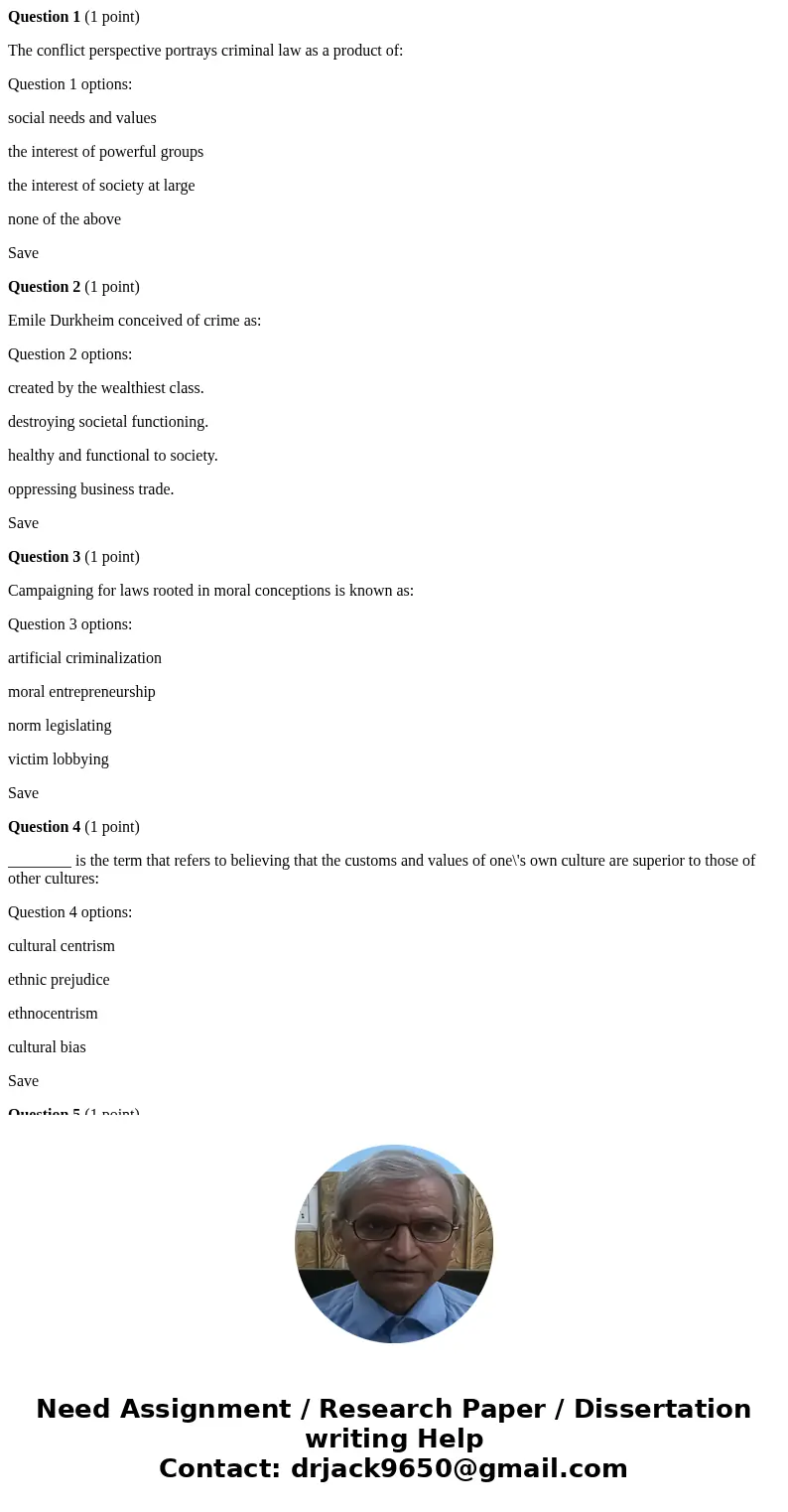
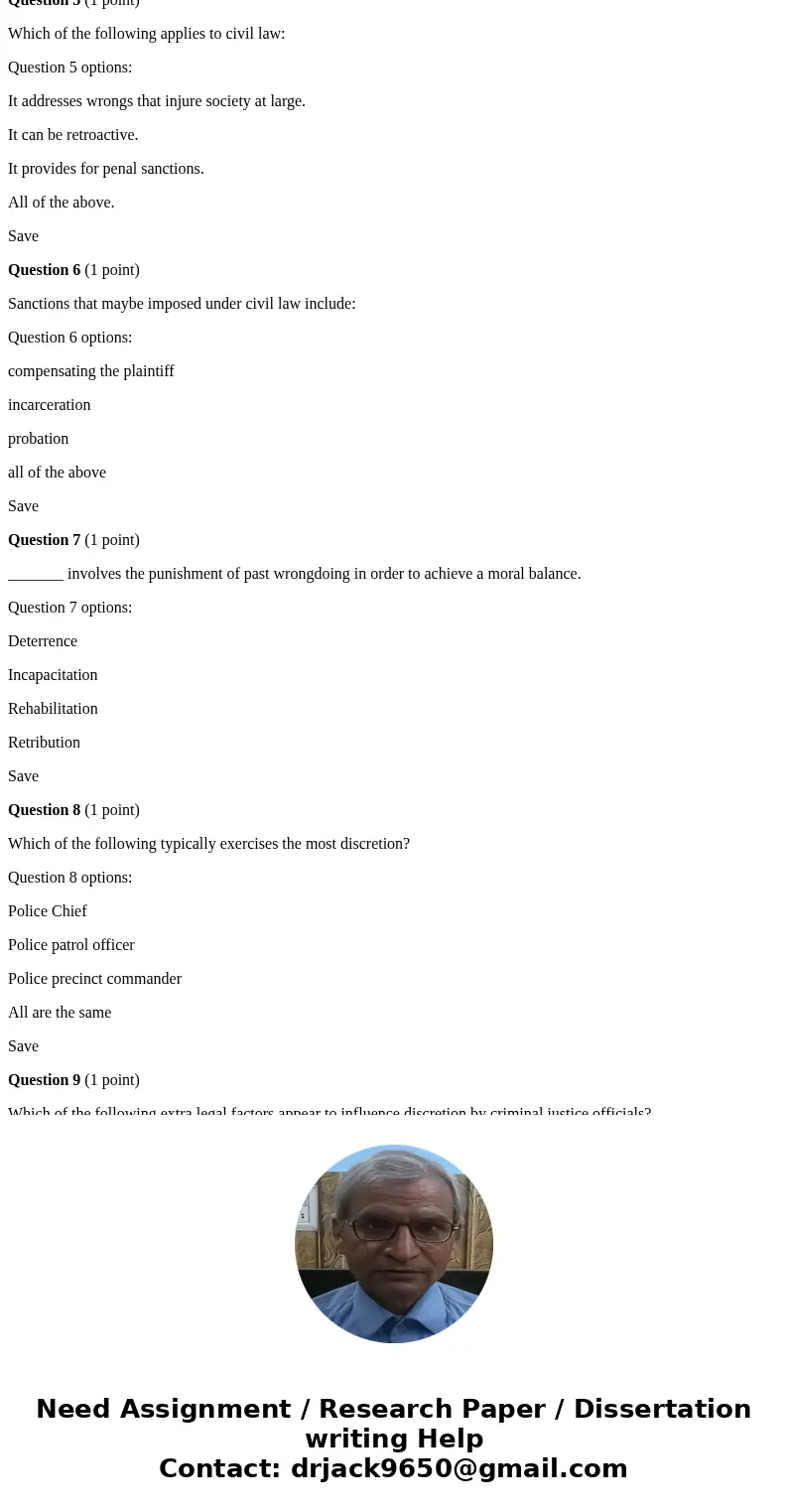
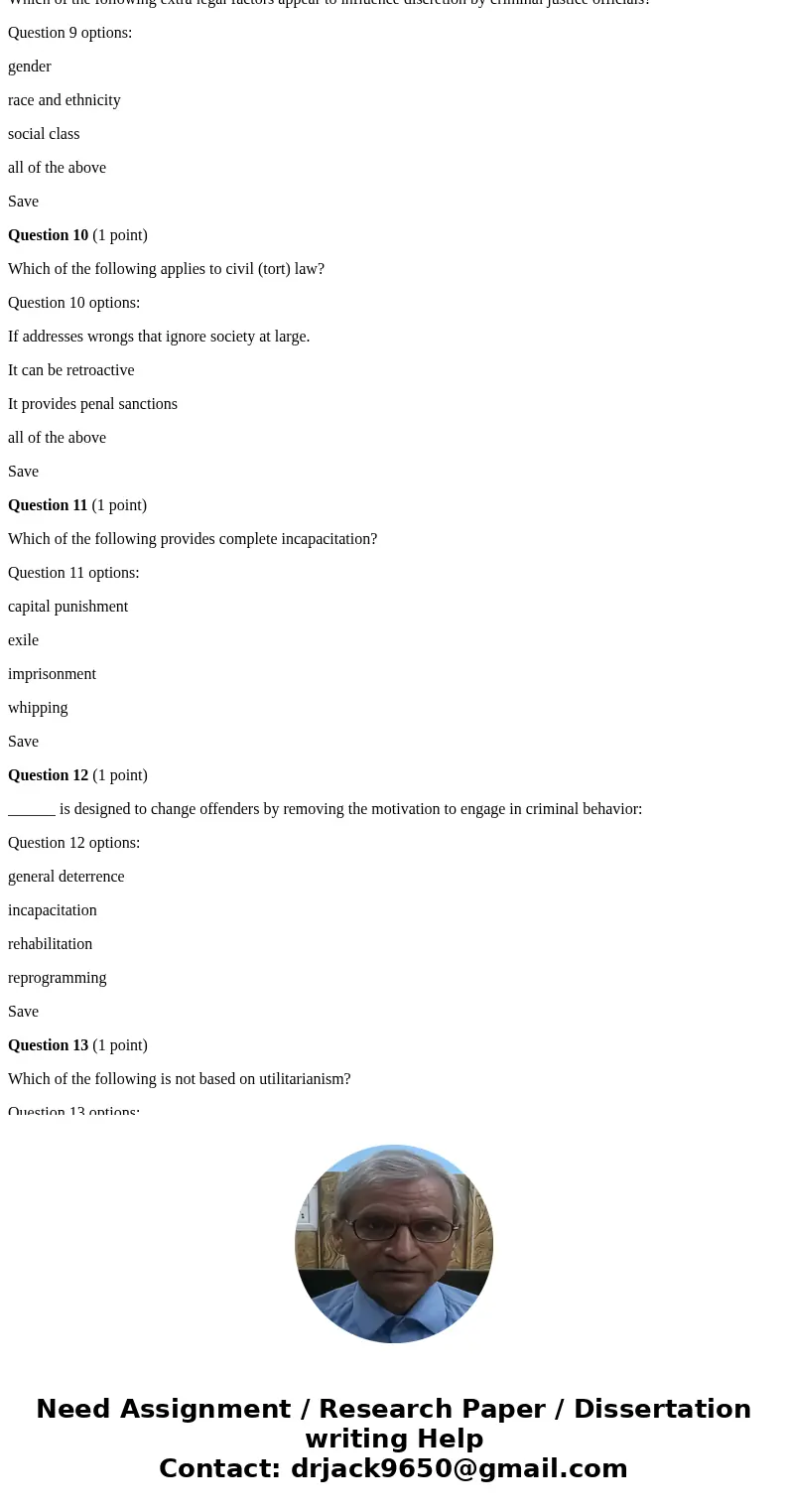
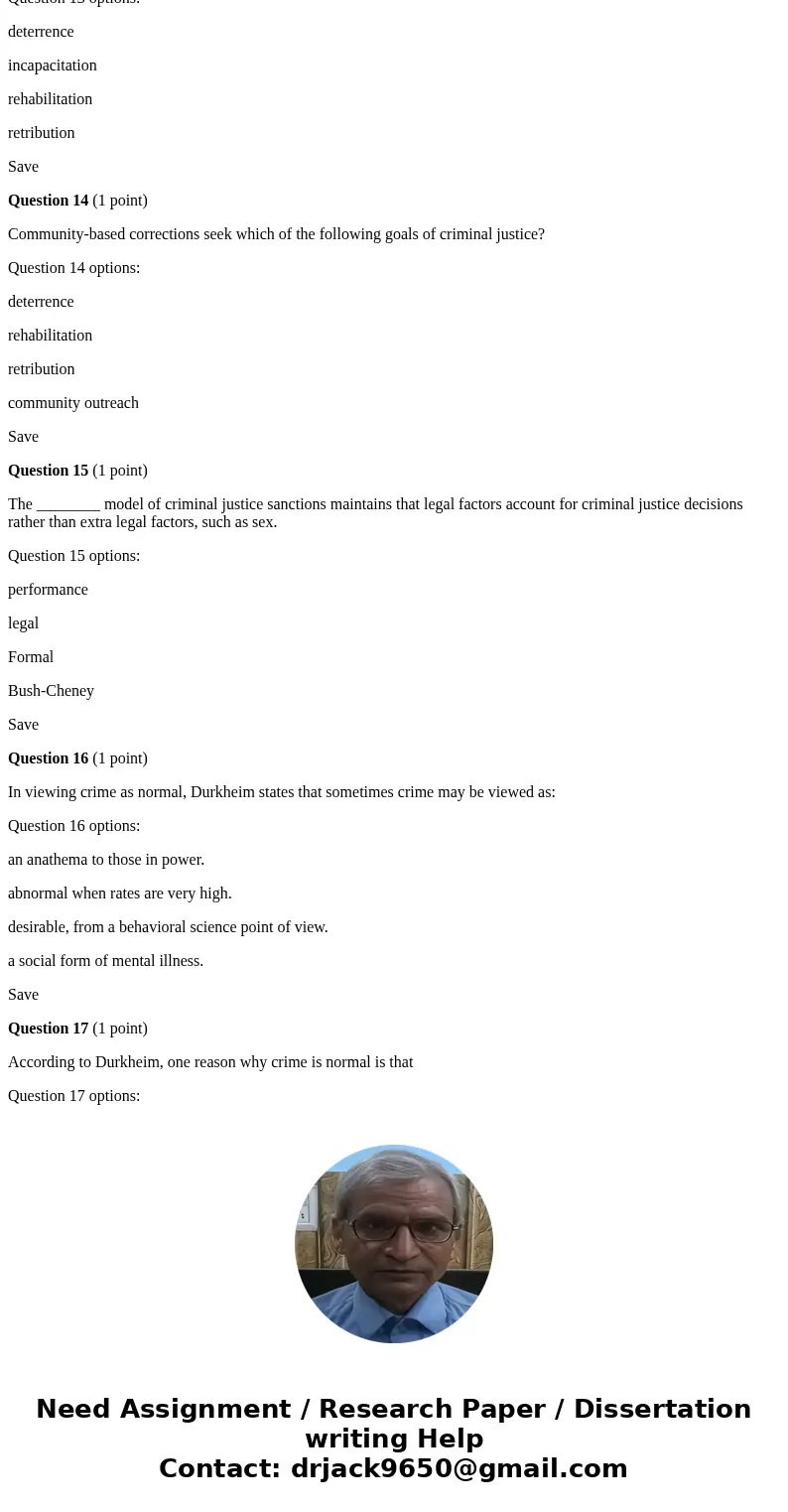
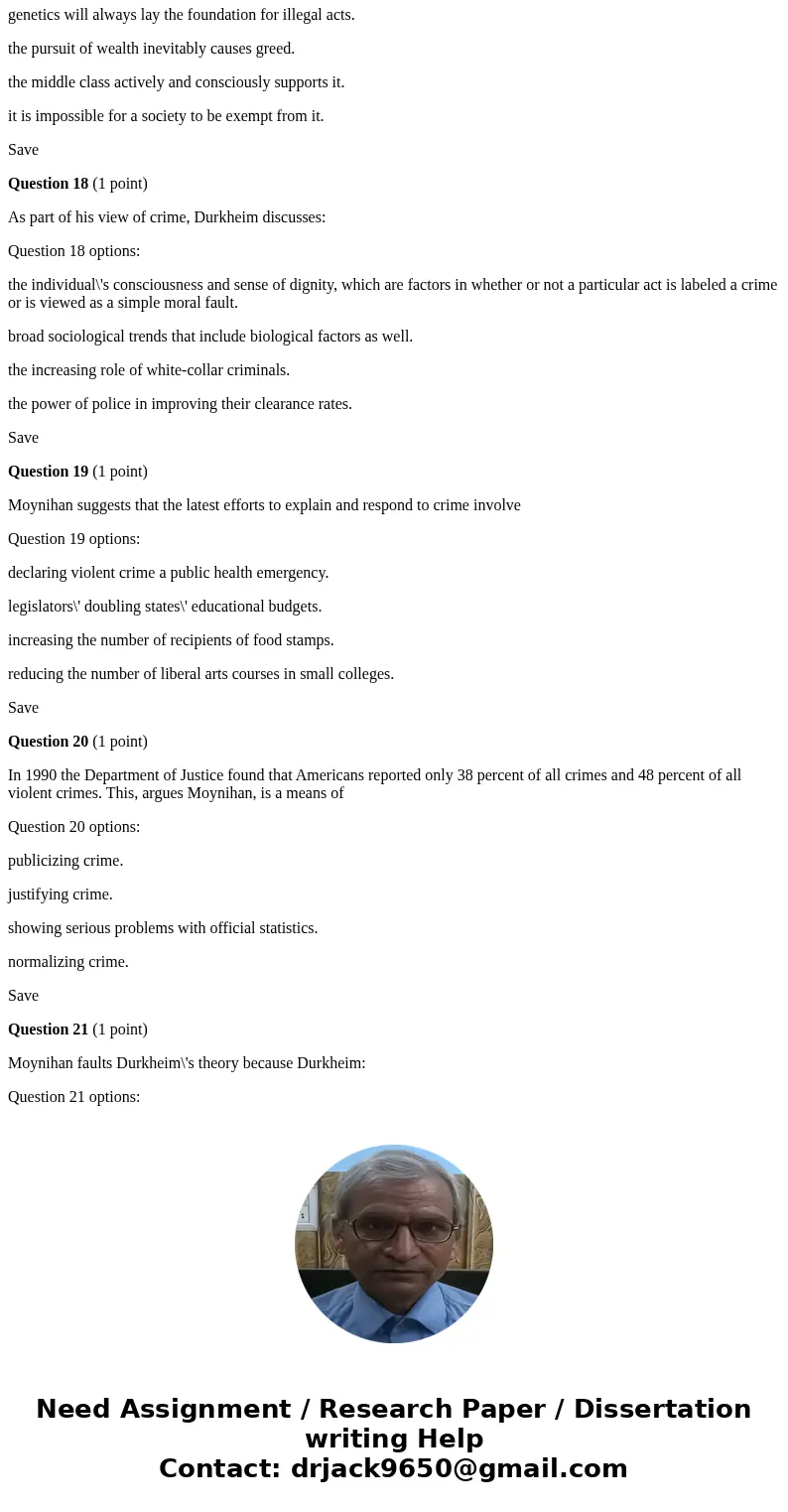
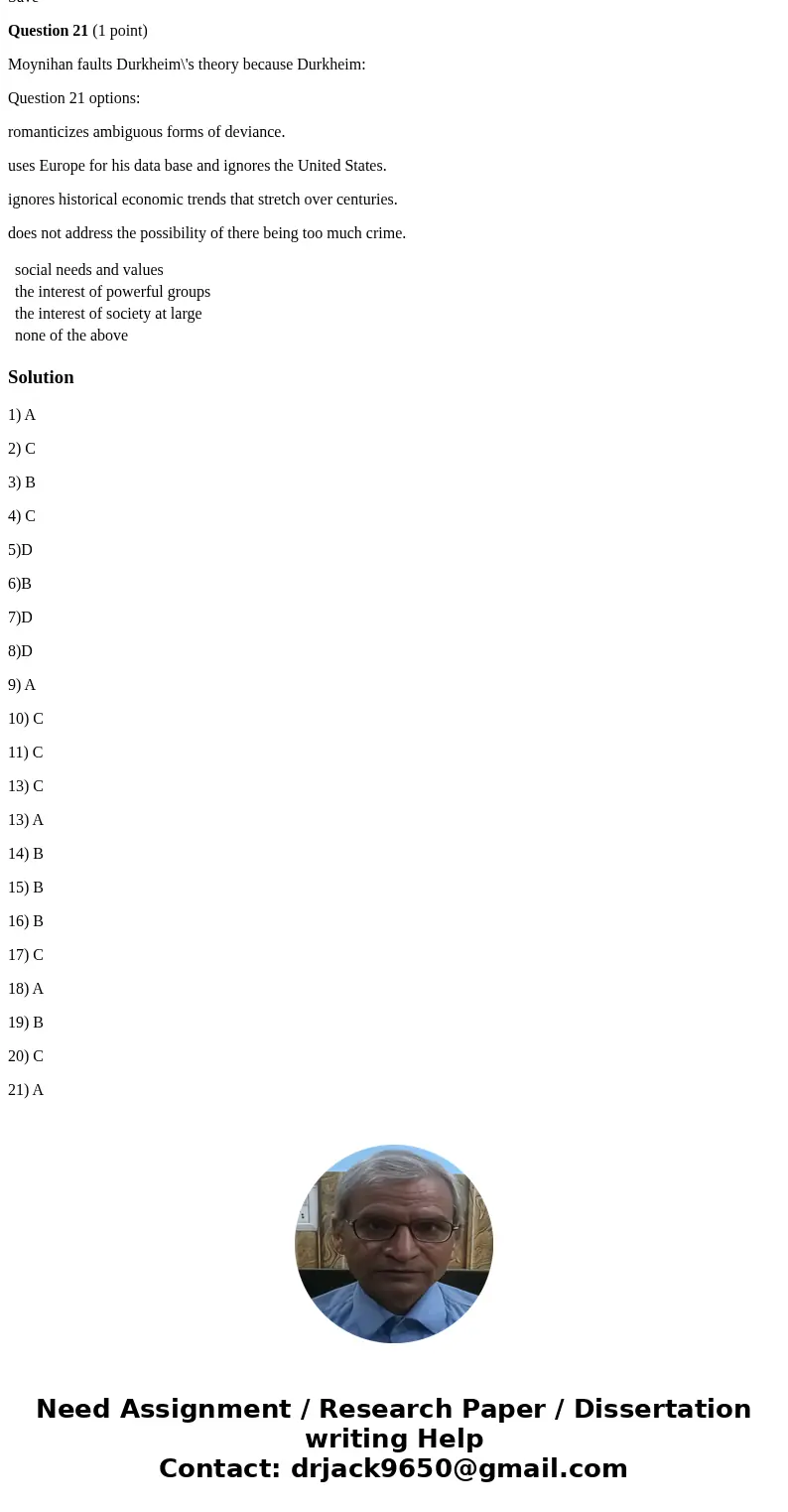
 Homework Sourse
Homework Sourse